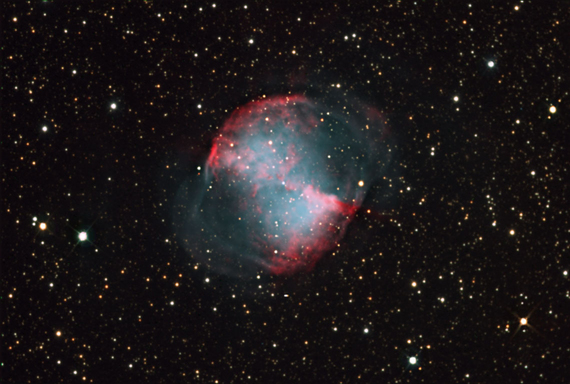The Dumbbell Nebula
 Click Image for full size view Warning: Full size images can be very large |
By |
Catalog |
Obj Type |
Location |
Date Taken: |
SSRO |
Messier 27 |
Planetary Nebula |
Mayhill, NM |
01-23-2005 |
Description |
||||
M27 was discovered on July 12, 1764 by Charles messier (hence the "M") while he was really looking for comets. This object is probably the result of a supernova that produced a shell of hot ionized gas. The common name is derived from the clearly visible dumbbell shape. As with most planetary nebulae, the distance of M27 (and thus true dimension and intrinsic luminosity) is not very well known. Hynes gives about 800, Kenneth Glyn Jones 975, Mallas/Kreimer 1250 light years, while other existing estimates reach from 490 to 3500 light years. Currently, investigations with the Hubble Space Telescope are under work to determine a more reliable and accurate value for the distance of the Dumbbell Nebula. Notice the red color in the nebula. This is Ha (Hydrogen Alpha) one of the most common forms of ionized gas. |
||||
Technical Details |
||||
Exposure Time: |
RGB (40, 60, 50 minutes) binned 2x2 with 10 minute integrations | |||
Camera: |
SBIG STL-11000M | |||
Telescope: |
RCOS 16 inch f/8.7 Ritchey-Chretien | |||
Mount: |
Software Bisque Paramount ME | |||
© 2024 SSRO Used with permission, No reproduction of these images are permitted without written approval from SSRO. |
||||
